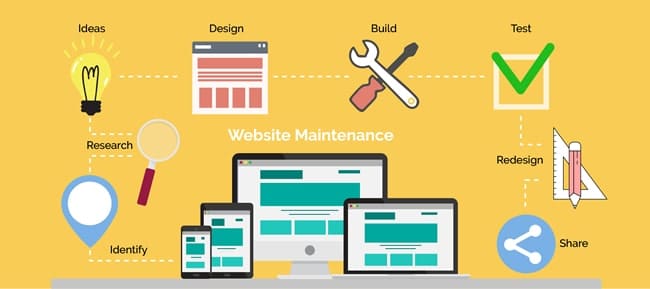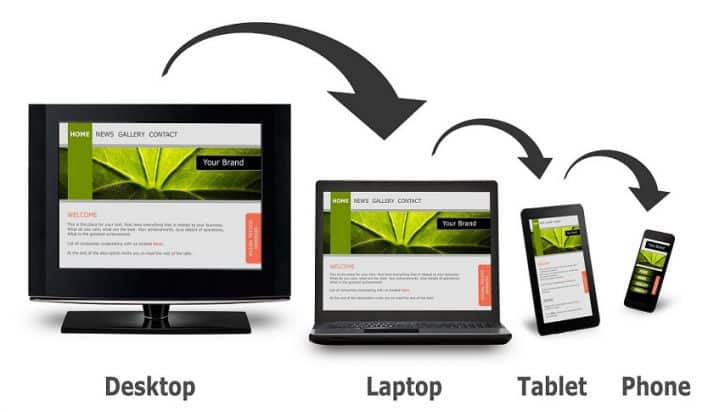Step 1: Define Your Website’s Purpose and Goals
Identify Your Target Audience
It is essential to have a clear understanding of the target audience for your website before delving into the technical parts. You will be able to better cater your content, design, and functionality to the requirements of your target audience if you are aware of who they are. 10 Essential Steps to Launch Your First Website
Set Clear Objectives
Make a list of the goals that you want to accomplish with your website. Having well-defined goals will help you make decisions for the entirety of the project, whether you are trying to develop a community, facilitate the exchange of knowledge, or sell things.
Step 2: Choose a Domain Name
Keep It Simple and Memorable

As the address of your website on the internet, your domain name is its address. Find a name that is simple to remember, spell, and type, and decide on that. The usage of hyphens and digits should be avoided because they can lead to confusion.
Check Availability
If you want to determine whether or not the domain name you want is available, you can use domain registration websites such as GoDaddy or Namecheap. If the name is already taken, you should think about other names or modifications.
Step 3: Select a Web Hosting Service
Understand Your Hosting Needs
The requirements for hosting a website vary depending on the type of website. A straightforward blog might be able to get by with shared hosting. On the other hand, virtual private servers (VPS) or dedicated hosting should be considered for websites that experience heavy traffic or e-commerce.
Compare Hosting Providers
When searching for the finest hosting service to meet your requirements, it is important to consider reviews, uptime guarantees, customer support, and cost. There are several popular choices available, like as Bluehost, SiteGround, and HostGator.
Step 4: Plan Your Website Structure
Create a Sitemap
A sitemap is an outline of the structure of your website that can be written or displayed visually. In addition to assisting you in organizing your material, it ensures that users are able to traverse your website with ease.
Plan Your Content
Choose the pages that you require, such as the Home page, About page, Services page, Blog page, and Contact page. Take into consideration the content of each page and how it will motivate your audience to interact with it.
Step 5: Design Your Website
Choose a Website Builder or CMS
Wix, Squarespace, and Weebly are examples of website builders that provide user interfaces that are simple to drag and drop. Taking into consideration a Content Management System (CMS) such as WordPress can provide you with increased control and scalability.
Select a Template or Theme
The design of your website can be built upon the basis provided by templates and themes. Choose one that is appropriate for your brand, and then modify it to fulfill your requirements. Make sure that it is responsive, which means that it functions as expected on mobile devices.
Step 6: Develop Your Website

Customize Your Design
Modify the selected template so that it corresponds with the colors, fonts, and style of your brand. Include your company’s logo and make sure that the layout is uniform throughout all of the pages.
Add Functionality
Include essential elements such as contact forms, e-commerce capabilities, social media integration, and search engine optimization tools in your offering. Plugins and widgets have the ability to extend the functionality of your website. https://diversewebsitedesign.com.au/motel-website-design/
Step 7: Optimize for SEO
Keyword Research
Determine the search terms that are the most popular among your target demographic. When searching for relevant keywords, you can make use of tools such as Google Keyword Planner, SEMrush, or Ahrefs.
On-Page SEO
Titles, headings, meta descriptions, and the body text of your material should all contain keywords for optimal optimization. Make sure that your URLs are clean and descriptive, and that your photos have alt text embedded in them.
Step 8: Test Your Website
Check for Errors
Perform a comprehensive check of your website to inspect it for typos, broken links, and missing images. In order to check for mistakes in HTML and CSS, you can use tools such as W3C Validator.
Test Functionality
Double check that all of the forms, shopping carts, and interactive components are functioning properly. In order to ensure compatibility, you should test your website on a variety of browsers and devices.
Step 9: Launch Your Website
Prepare for Launch
Before going live, you should make a list of all the tasks that need to be finished. Among these are the completion of the content, the establishment of analytics, and the guarantee that backups are in place.

Go Live
After you have determined that everything is ready, you should launch your website. If you want to attract visitors to your website, you should announce the launch on social media, email newsletters, and other means.
Step 10: Monitor and Maintain Your Website
Track Performance
Make use of analytics tools such as Google Analytics to keep track of the traffic to your website, the behavior of your users, and other important indicators. This information enables you to gain a better understanding of how well your website is working and the areas in which it could be improved.
Regular Updates
It is important to maintain the freshness of your website by continuously updating the content, adding new features, and resolving any problems that may occur. Maintaining your website on a regular basis ensures that it continues to be secure and offers a positive experience for users.
Conclusion
When you launch your first website, you have reached a huge milestone. By adhering to these ten crucial measures, you will establish a solid basis for a prosperous presence on the internet. Keep in mind that you should maintain your concentration on your objectives, regularly check the success of your website, and make adjustments as required. Your website has the potential to become an effective instrument for accomplishing your goals if you devote yourself to it and plan it out thoroughly.





